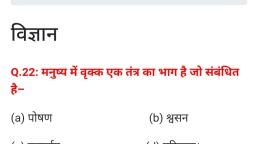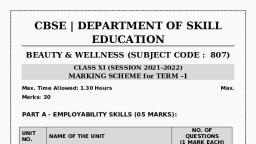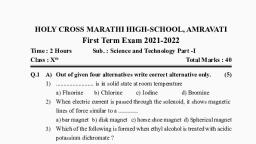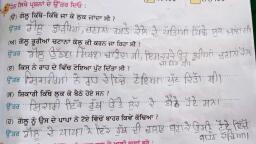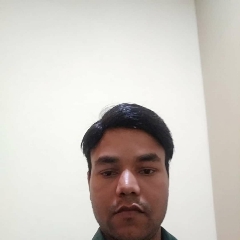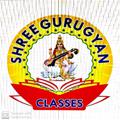Question 1 :
The price of a certain item was $10 in 1990 and it has gone up by $2 per year since 1990. If this trend <span>continues, in what year will the price be $100 ? </span><br>
Question 2 :
Let $a_n$ be the nth term of an A.P. If $\sum\limits_{r=1}^{10^{99}} a_{2r}= 10^{100}$ and $\sum\limits_{r=1}^{10^{99}} a_{2r-1}=10^{99}$, then the common difference of A.P. is
Question 3 :
If the third term of an AP is $12$ and the seventh term is $24$, then the $10^{th}$ term is 
Question 4 :
If $a_{1},a_{2},a_{3},a_{4}$ are the terms in AP.<div>if $a_1=5;d=9$ , $a_4$  is equal to</div>
Question 5 :
If the nth term of an AP is $\dfrac{3+n}{4} $, then its 8th term is<br/>
Question 6 :
Which term of the AP. 20, 17, 14, .........; is the<br>first negative term ?<br>
Question 7 :
The sum of three number in A.P is $12$ and the sum of their cubes is $288$. Find the numbers. 
Question 8 :
<span>Consider a sequence whose sum to $n$ terms is given by the quadratic function ${S}_{n}=3{n}^{2}+5n$ </span>The nature of the given series is
Question 9 :
The $17^{th}$ term of an A.P. is 5 more than twice its $8^{th}$ term. If the $11^{th}$ term of the A.P. is 43, find the $n^{th}$
Question 11 :
If an A.P, if $S_{5} = 35$ and $S_{4} = 22$ then $5^{th}$ term is.
Question 12 :
If in the triangles $ABC$ and $DEF$, angle $A$ is equal to angle $E$, both are equal to ${40}^{o}$, $AB:ED=AC:EF$ and angle $F$ is ${65}^{o}$, then angle $B$ is:
Question 13 :
The areas of two similar triangles ABC and PQR are $25\ cm^{2}\ \& \  49\ cm^{2}$, respectively. If QR $=9.8$ cm, then BC is:<br/>
Question 14 :
A right-angles triangle has hypotenuse $13$ cm, one side is $12$ cm, then the third side is _________.
Question 15 :
In $\triangle ABC$, $\angle C={90}^{o}$. If $BC=a, AC=b$ and $AB=c$, find $b$ when $c=13 \ cm$ and $a=5 \ cm$.
Question 16 :
The length of the hypotenuse of a right-angle triangle whose measure of two sides are 12 cm and <div>0.35 m is:</div>
Question 17 :
<div><span>It is given that $\triangle FED\sim \triangle STU$. Is it true to say that </span><span>$\cfrac{DE}{UT}=\cfrac{EF}{TS}$? </span><br/></div>
Question 18 :
A has a pair of triangles corresponding sides proportional, and B has a pair of pentagons with corresponding sides proportional,<br>$S_1=A'$s triangles must be similar<br>$S_2=B'$s pentagons must be similar<br>Which of the following statement is correct?
Question 19 :
The perimeter of two similar triangles is 40 cm and 50 cm. Then the ratio of the areas of the first and second triangles is
Question 20 :
In $\Delta ABC$, DE is || to BC, meeting AB and AC at D and E. If AD = 3 cm, DB = 2 cm and AE = 2.7 cm, then AC is equal to:
Question 22 :
If the three sides of a triangle are proportional to the corresponding three sides of another triangle then their corresponding angles are
Question 23 :
If $\alpha$ and $\beta$ are the roots of quadratic equation, then the value of  ${\left(\dfrac{\alpha}{\beta}-\dfrac{\beta}{\alpha}\right)}^{2}$ is 
Question 24 :
Which of the following equations has two distinct real roots ?<br>
Question 25 :
The discriminant ($D$) of the equation $5x-6+\cfrac { 1 }{ x } =0$ is ............
Question 26 :
If ............, then the quadratic equation does not have real solution.
Question 27 :
If the roots of the equation $ax^2+bx+c=0$ are all real equal then which one of the following is true?
Question 28 :
The roots of the equation  $ax^{2}+x+b=0 $ are equal if :<br/>
Question 29 :
If $a,b,c$ are distinct, positive  in $H.P$, then quadratic equation ${ ax }^{ 2 }+2bx+c=0$ has 
Question 30 :
If $\displaystyle ax^{2}+bx+1= 0, a \in R, b\in R,$ does not have distinct real roots, then the maximum value of $b^2$ is
Question 31 :
The quadratic equations $2x^{2} - (a^{3} + 8a - 1)x + a^{2} - 4a = 0$ possesses roots of opposite sign. Then
Question 32 :
If $\displaystyle y^{2}< x$ and $\displaystyle x\in \left ( -\infty ,0 \right )$  then $y$ must<br/>
Question 33 :
Number of possible value(s) of integer '$a$' for which the quadratic equation $x^2+ax+16=0$ has equal roots, is
Question 37 :
To eliminate x from equations $x + y + 3x = 12 \rightarrow$ ....... (1) & $8x + 3y = 17  \rightarrow $ ..... (2), equation (2) is to be multiplied by ..............( from the given options)
Question 39 :
Solve for $x$ and $y$ by using method of substitution :<br>$0.2x+0.3y=1.3$; $0.4x+0.5y=2.3$
Question 42 :
Find the value of a and b using substitution method:<br><span>$a + b = 3$ and $-3a + 2b = 1$</span>
Question 43 :
<span>Based on equations reducible to linear equations</span><br/><span>Solve for x and y: </span><span>$\dfrac {24}{2x+y}-\dfrac {13}{3x+2y}=2; \dfrac {26}{3x+2y}+\dfrac {8}{2x+y}=3$</span>
Question 44 :
<span>Based on equations reducible to linear equations</span><br/><span>Solve for x and y: </span>$\dfrac {16}{x+3}+\dfrac {3}{y-2}=5; \dfrac {8}{x+3}-\dfrac {1}{y-2}=0$<br/>
Question 45 :
Factorise the expressions and divide them as directed.$5pq(p^2 - q^2)\div 2p(p + q)$
Question 48 :
Find the value of a & b, if  $8{x^4} + 14{x^3} - 2{x^2} + ax + b$ is divisible by $4{x^2} + 3x - 2$
Question 50 :
If $(x^3+5x^2+10k)$ leaves remainder $-2x$ when divided by $x^2+2$, then what is the value of k?
Question 51 :
The value of $\displaystyle \frac { 28xy\left( y-5 \right) \left( y+4 \right)  }{ 14y\left( y-5 \right)}$ is 
Question 52 :
If $\beta$ and $\dfrac{1}{\beta}$ are zeroes of polynomial $6x^2-24x+(a-12)$. Find $a$.<br/>
Question 53 :
For the zeroes $\alpha $ & $\beta$ of polynomial $P(x) = ax^2 + bx + c , \dfrac{1}{\alpha} + \dfrac{1}{\beta} = $ ....................
Question 54 :
The number of integers $n$ for which $3x^3-25x+n=0$ has three real roots is$?$<br/>
Question 55 :
If $\alpha$ and $\beta$ are the zeroes of the quadratic polynomial $f(x) = x^2 - (\sqrt{5} -1)x -(\sqrt{5} + 1)$, then the value of $\displaystyle \frac{1}{\alpha^2} + \frac{1}{\beta^2}$ is ____________.

